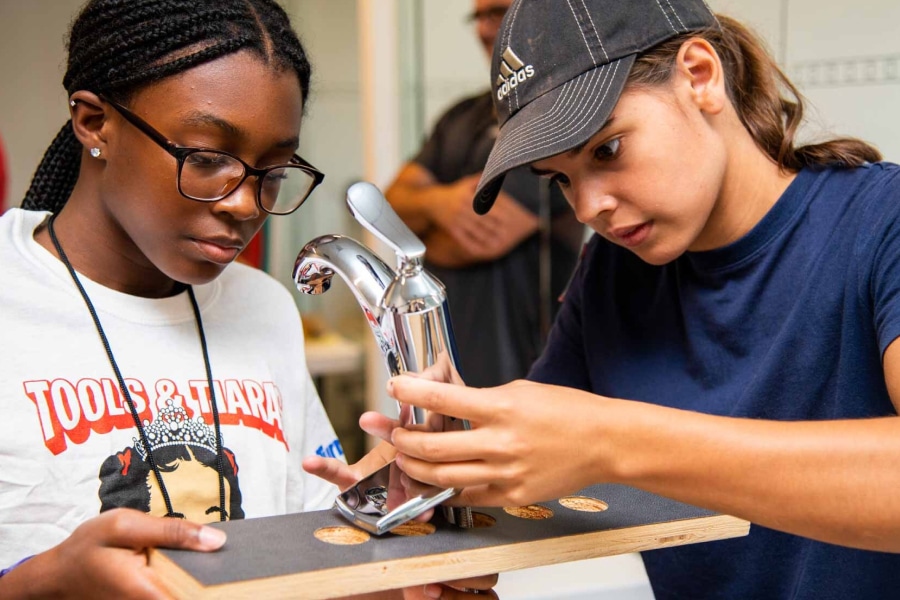Less than a generation ago, in a serious bid to grow our future workforce, the Australian government was urging Australians to procreate: “have one for mum, one for dad and one for the country.”
And now the call to arms has shifted to industry, as in October 2022, the government announced plans to extend paid parental leave to parents of all genders.
How will your construction business meet the challenge?
The advent of parental support across the Australian workforce
Since the 2004 Baby Bonus, a range of options has been introduced to help stem the impact of an ageing workforce. The children truly are our future, and we all need to invest in it — even now we are seeing record numbers of jobs unfilled across the nation.
Australia’s first national Paid Parental Leave scheme was introduced in January 2011. Under the scheme, eligible working parents can receive taxpayer-funded pay when they take time off from work to care for a newborn or recently adopted child.
Parental leave across male-dominated industries
While 3 in 5 businesses across the nation have also invested in paid parental leave provisions, across male-dominated industries such as construction only 1 in 2 have made the leap. For some businesses, extended employee absences are considered disruptive and viewed as impacting the bottom line.
The average number of weeks an average worker takes primary carer’s leave for is 10.3 weeks; however, in the secondary carers-dominated construction industry the average is 1.3 weeks.
This deficiency has been harnessed by forward-looking organisations such as Multiplex.
The global building contractor introduced a new parental leave and support program in 2020 to support parents while they are on leave as well as help their long-term career advancement and financial security.
The program includes 18 weeks paid parental leave for primary carers, available to mums and dads at any point in the first two years, and two weeks for secondary carers. The arrangement aims to offer new parents flexible options in how and when they take time off to spend with their families.
“When we talked to our pilot group of parents, they told us that while paid parental leave for primary and secondary carers was really valued, they also needed longer term support,” said Caitriona Comerford, Multiplex executive director – people.
“They wanted to feel like they were able to continue growing in their careers when they returned to work, and that they weren’t being penalised financially or in terms of career progression for taking time out.”
Conscious of providing holistic support, Multiplex also provides one to one transition coaching for all parents taking leave to help make the transition in and out of work smoother and set them up for success on return.
“It’s not about parents returning from parental leave and being thrown back in at the deep end. We want returning parents to have a clear transition plan in place. The transition coaching involves a conversation with the manager before going on leave and upon return. This helps support open and practical conversations about support that is required and any adjustments that need to be made,” Comerford said.

The program also included continued superannuation payments for unpaid leave for up to 12 months, recognising the longer-term financial impacts employees can have in regards to their superannuation.
In 2021, Multiplex Cost Planner Grant Sanderson took advantage of Multiplex’s parental leave scheme.
“Initially I took two weeks (secondary carer leave) when our daughter was born,” he said. “Then, when my wife Jane decided to go back to work, I looked into a relatively new policy Multiplex had introduced. I was able to take over as the primary carer with 16 weeks paid leave on offer, which allowed Jane to get back into the workforce and restart her career.
Why should your construction business invest in parental leave?
Research from the Workplace Gender Equality Agency in 2019 confirmed that parental leave uptake by fathers and partners “tends to remain low because of barriers relating to income, organisational stigmas and traditional gender norms.”
However, the WGEA also found that “when fathers and partners take parental leave, organisations report better recruitment, retention and promotion rates, leading to stronger performance and productivity outputs.”
Organisational benefits of investing in paid parental leave include:
- Reputation: supporting employees as they grow families demonstrates value and commitment to the people working with and for your business.
- Recruitment and retention: including paid parental leave in your employment offering helps your business attract and retain key staff in an environment where good people are hard to find. The recruitment and onboarding cost savings are lucrative — into the tens of thousands of dollars.
- Workforce development and stability: when planning for an employee’s parental leave absence you can help other staff diversify their skills sets and take on new challenges.
Each of these key benefits makes a positive impact on your business’s bottom line, improving productivity and profitability into the longer term.
Paid parental leave in practice
For Grant Sanderson, taking paid parental leave to support his family was a seamless process.
“The process was quite an easy one. I spoke about it with my manager and HR about how it would all work. This allowed me to ensure that I could tie up loose ends and finish my workload so that I worked in with the business’s current and anticipated project workload,” he said.
“We knew roughly what projects were coming up — meaning our manager was able to shift staff to where needed while I was gone and also meant that when I came back resources such as myself were already allocated.
“Initially, it was a bit of a tough choice … to decide between career and time with family. But this is something that a lot of working mothers, particularly, face.
“Having the three months with my daughter meant the world to me. It was a time I never thought I would be able to have, and I never would have understood just how much it could have meant to me.”












